Beer
Beer
3rd Edition
TAP INTO THE ART AND SCIENCE OF BREWING
CHARLES BAMFORTH


Oxford University Press, Inc., publishes works that further Oxford Universitys objective of excellence in research, scholarship, and education.Oxford New York
Auckland Cape Town Dar es Salaam Hong Kong Karachi
Kuala Lumpur Madrid Melbourne Mexico City Nairobi
New Delhi Shanghai Taipei TorontoWith offices in
Argentina Austria Brazil Chile Czech Republic France Greece
Guatemala Hungary Italy Japan Poland Portugal Singapore
South Korea Switzerland Thailand Turkey Ukraine VietnamCopyright 2009 by Oxford University Press, Inc.Published by Oxford University Press, Inc.
198 Madison Avenue, New York, NY 10016 www.oup.com Oxford is a registered trademark of Oxford University PressAll rights reserved. No part of this publication may be reproduced, stored in a retrieval system, or transmitted, in any form or by any means, electronic, mechanical, photocopying, recording, or otherwise, without the prior permission of Oxford University Press.Library of Congress Cataloging-in-Publication Data
Bamforth, Charles W., 1952
Beer : tap into the art and science of brewing / Charles Bamforth.3rd ed.
p. cm.
Includes bibliographical references and index.
ISBN 978-0-19-530542-5
1. BrewingAmateurs manuals. 2. Beer.
I. Title.
TP577.B34 2009
641.6[H11032]23dc22 20080500141 3 5 7 9 8 6 4 2Printed in the United States of America
on acid-free paper
For Diane, Peter, Caroline, Emily, Stephanie, and Arek
Beer a high and mighty liquor
JULIUS CAESAR
FOREWORD
The first edition of Beer: Tap into the Art and Science of Brewing was published in 1998. It is a great compliment to the quality and readability of this book that the third edition is being published only ten years later. There are a number (some would say too many!) of books and monographs that consider the scientific and technical aspects of brewing. Nevertheless, it is a reflection of this books high standard that its publishers regard its republication as warranted. In his Foreword to the first edition Dave Thomas wrote: Charlie has managed to elegantly combine many of the most fascinating and memorable points that arise from the study of beer and brewing within the pages of this text, making it an enjoyable read. This is also true of the third edition.
Why is this the case? It is not a detailed technical volume with too much scientific information that will collect dust on a bookshelf. Written in the authors characteristic style, it is a readable, comprehensive publication that considers the brewing process, relevant historical aspects, beer types old and new, new materials, relevant analytical procedures, and lastly (but not least) a crystal ball examination considering malting and brewing in the near and long term.
What are the strengths of this book? Firstly, as already discussed, it is easily readable, with many interesting anecdotes and historical details. Secondly, the photographs and other illustrations employed have been well researched and are of good quality. Thirdly, every effort has been made to include novel material; it is a real third edition, not just a reprinting. In my comments printed on the cover of the first edition I remarked This book is highly recommended to anyoneold and young, newcomer and old hand in the industrywho wishes to broaden his or her knowledge of brewing. This statement is more appropriate today than it was ten years ago because many more people are embarking on a career in the craft brewing industry with minimal technical background of the process. For example, any novice in the industry will find the glossary and the description of scientific principles contained in this book invaluable.
If I have one questionable comment, it is with the title of this volume, which as it was published ten years ago is a bit late! Nevertheless, I have never believed that brewing ever was or ever will be an art. It was a craft that through the application of scientific and engineering principles became a technology!
GRAHAM G. STEWART
Emeritus Professor of Brewing
Heriot-Watt University, Edinburgh
Scotland, U.K.
PREFACE
I forget who said: I am not paranoid but that doesnt mean that they arent out to get me. It would be very easy to become suspicious, being the brewing professor in a state where, among other amazing locales, the beautiful Napa Valley and the even more beautiful Sonoma Valley are meccas for wine aficionados. And so when I declare my role in life, there are plenty of folks who look at me initially with curiosity and amusement and, struggling to say something relevant, offer: Oh, hops! If I were to ask them which of these wonderful drinks, beer and wine, do you think is the more complex, more demanding to produce, fitted for accompanying a broader range of foods, and healthier for you, and all this usually at a far more realistic price? they would certainly not get the right answer. For them wine is liquid gold, whereas beer is molten lead. Nothing could be further from the truth.
Of course, the other thing those winebibbers are forever saying to me is it takes a lot of good beer to make good wine. If only they would realize how patronizing and offensive that saying is. The reality is that the better winemakers have learned a great deal from studying the developments pioneered in the brewing industry.
This is not a book in which I wish to dwell overtly on the comparisons between wine and beer. I perceive them both to be fantastic elements of a fabulous lifestyle. True, I think wine has often been pedestalized in a ludicrously exaggerated fashion, and I fear that many a vinous emperor is in danger of being seen for the clothes that they are really wearing. By contrast, though, beer has too often been taken for granted: a Ford Festiva to wines Rolls Royce. It is time for the layperson and for those nontechnical folks associated with the beer industry to learn that it is actually brewing that is the leader scientifically and technically, truly the giant in every respect within the alcoholic beverages industry. I hope this book helps in that educational process.
PREFACE
TO THE SECOND EDITION
Not long before leaving England to take up my role as Professor of Malting and Brewing Sciences at the University of California, Davis, in February 1999 I was the guest on a local radio show in Guildford. Two questions I remember well.
The first was, Charlie, did you think as a young boy at school in Lancashire that you would one day be the beer professor in California? to which the instinctive reply, of course, was, Well, itll be a lousy job but I guess somebody has to do it. It must be my debt to society. I was, of course, using irony, lest anybody think I meant it!
The second question was more irritating. Charlie, how will you possibly be able to enjoy those weak and tasteless beers over there after so long drinking our lovely English ales? I was composed, replying thus:
Its horses for courses. If I am in a 300-year-old thatched West Sussex pub, my bald head scraping the ceiling, snow outside, a roaring log fire within, a plate of Shepherds Pie to devour from atop a well-scrubbed oaken table of great antiquity, then a pint of flat, generously hopped ale is a delight. However, if Im in a baseball stadium, seventh inning stretching with a pile of nachos topped with jalapeos and 40 degrees of Mr. Celsius best frying my few follicles, then an ice-cold Bud is to die for. And, by the way, if youre talking weak, then do remember that a U.S. lager will typically contain 20% more alcohol (at least) than an ale from England.


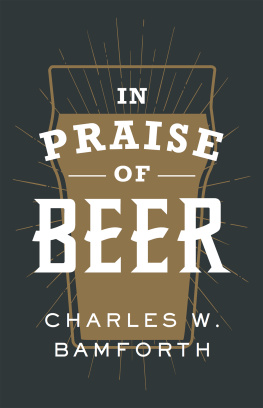
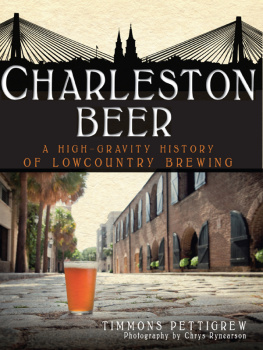

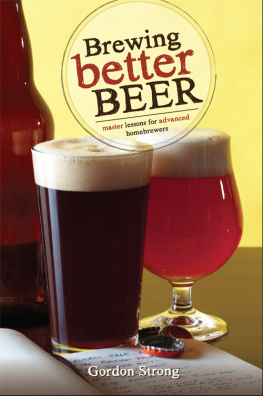

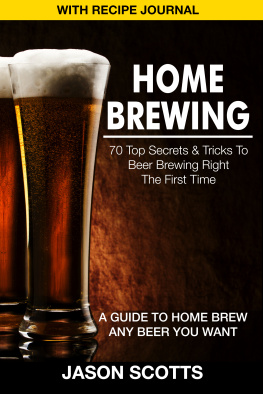
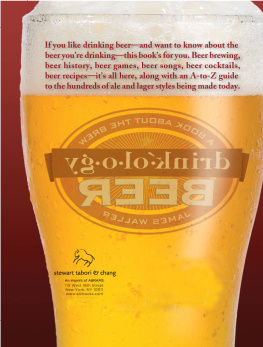


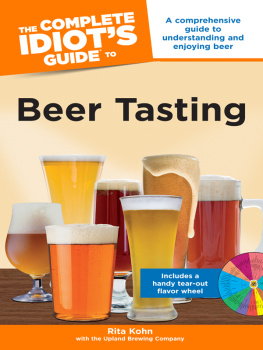

 Oxford University Press, Inc., publishes works that further Oxford Universitys objective of excellence in research, scholarship, and education.Oxford New York
Oxford University Press, Inc., publishes works that further Oxford Universitys objective of excellence in research, scholarship, and education.Oxford New York